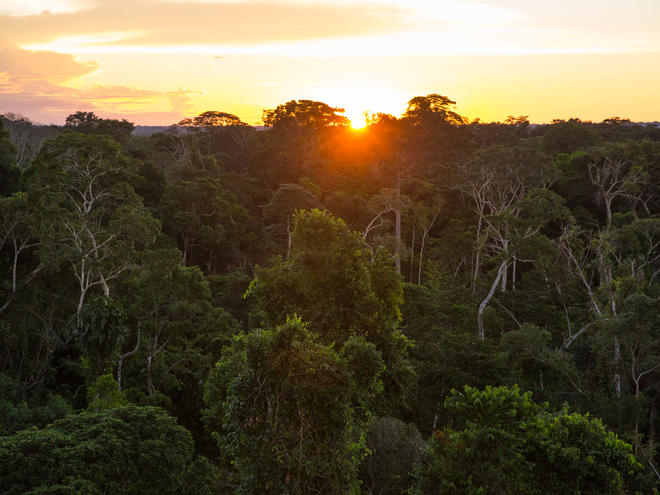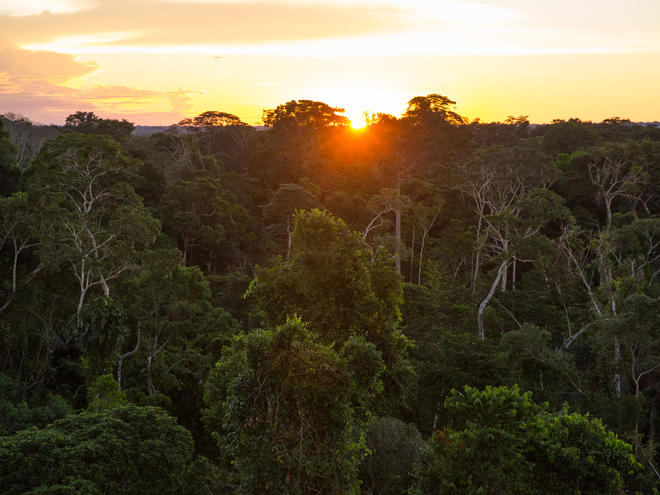Protecting the Peruvian Amazon
Published by the World Wildlife Fund

Alfredo Ferreyros has seen flocks of macaws soar over the Peruvian Amazon rivers, their bright feathers creating a rainbow against the sky. He’s risen before sunrise many times to trek to the lakes where elusive giant river otters play. And he’s even spotted jaguars dozing on fallen trees at river’s edge in the Amazon forest.
As the first person to create an ecotourism company in Peru, 44 years ago, Ferreyros has seen most of the natural wonders of the Peruvian Amazon that are on tourists’ bucket lists. But he’s also witnessed growing challenges in the Amazon—mainly in the form of deforestation. The highest annual deforestation totals on record in the country have been over the past four years.
One of the best ways to stop deforestation—which negatively impacts the work of Ferreyros and people whose livelihoods depend on a healthy environment—is to ensure there’s long-term funding to properly manage the country’s national parks. The parks, most which are in the Amazon, are referred to on paper as “protected areas.” However, they can’t truly be protected from illegal loggers—or wildlife poachers, illegal gold miners, and others who see dollar signs in Peru’s forests—if there is not enough money to manage them well.
That’s why Ferreyros, who has helped the government design the country’s network of protected areas, is excited about a new initiative to fund the expansion and effective management of these important places in Peru. Through National Parks: Peru’s Natural Legacy, $140 million will be earmarked to permanently protect nearly 41 million acres in the Peruvian Amazon. On May 24th, partners supporting the initiative were in the Amazon to celebrate the commitment of the majority of this funding and meeting all of the conditions necessary to use the funding.
Funding for the Government of Peru-led initiative comes from the Government of Peru, WWF, Gordon, and Betty Moore Foundation, Amazon Andes Fund and the Global Environment Facility. It will be used for such things as equipment and training.
This is a milestone not just for Peru, but for the greater Amazon. The Peru initiative joins two similar ones in Brazil and Colombia. Together these three initiatives will permanently protect approximately 12% percent of the Amazon.
Protected areas in the Peruvian Amazon are critical to the health and strength of the country’s environment and economy. The forests within them, for example, have the potential to sequester nearly 50% of the estimated emissions from deforestation in the Peruvian Amazon. They also help boost the economy—mostly in the form of revenue from tourists who come to see Amazonian wildlife. Job opportunities, too, are greater for the people living in or adjacent to Peru’s protected areas than those living in natural resource-rich areas that are not protected.
Well-managed protected areas help ensure these benefits and many more can be realized now and well into the future.
Read the full article at: http://feedproxy.google.com/~r/WWFStories/~3/GmD0FA-FwAk/protecting-the-peruvian-amazon


